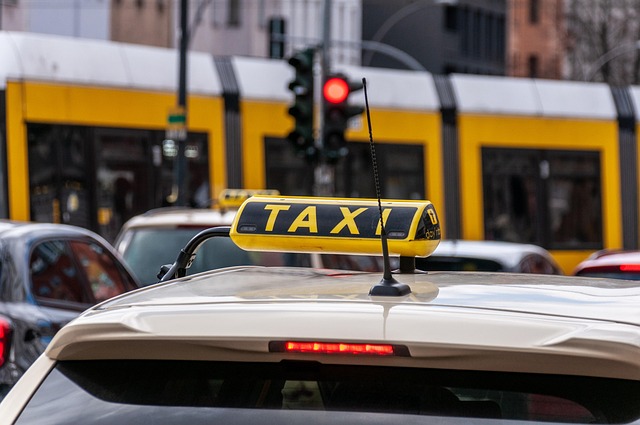“Unsure about registering your car in California? This comprehensive guide breaks down the process, ensuring a smooth experience. From understanding the essential steps to gathering required documents and even using a VIN verifier for accuracy, we cover it all. Learn how to choose the right registration method tailored to your needs in California. By following these simple instructions, you’ll be on your way to a legally registered vehicle in no time.”
- Understanding the California Car Registration Process
- Gather Necessary Documents for Car Registration
- Verify Your Vehicle's VIN (Vehicle Identification Number)
- Choose a Suitable Registration Method in California
- Step-by-Step Guide to Registering Your Car in California
Understanding the California Car Registration Process

Understanding the California Car Registration Process
Registering a car in California involves several key steps that ensure vehicle safety and compliance with state regulations. The process begins with gathering essential documents, including your vehicle’s registration from the previous state, proof of insurance, and identification. Once you have these prepared, it’s time to visit a California Department of Motor Vehicles (DMV) office or utilize their online services for submission. A crucial aspect of this process is the Vehicle Identification Number (VIN) inspection, which verifies the vehicle’s authenticity and history through a mobile VIN verification or check by a DMV inspector.
After your application is accepted, you’ll receive your California car registration along with a license plate. It’s important to keep these documents up-to-date and readily available for future references or during routine checks by law enforcement officials. Additionally, remember that certain fees may apply, which vary based on factors like the type of vehicle and its age. Efficiently navigating this process ensures your vehicle is legally registered and ready to hit the California roads.
Gather Necessary Documents for Car Registration

Before you begin the registration process for your new or used car in California, make sure to gather all the essential documents required by the Department of Motor Vehicles (DMV). One crucial document is the Vehicle Identification Number (VIN) verifier, which can be obtained through a mobile vin inspection or a standard vin inspection. This unique 17-character code is like a fingerprint for your vehicle and is necessary for registration.
Additionally, you’ll need proof of ownership, typically a bill of sale or purchase agreement, and valid identification documents such as a driver’s license or state ID card. If the car has been previously registered in California, you might also require the previous owner’s signed title transfer form. Always double-check with the DMV for the most up-to-date list of required paperwork to ensure a smooth registration experience.
Verify Your Vehicle's VIN (Vehicle Identification Number)

Before you begin the registration process, it’s crucial to verify your vehicle’s VIN (Vehicle Identification Number). This unique code is a critical component in identifying your car and ensuring a smooth registration. You can easily check the VIN by inspecting the vehicle itself or using online tools provided by official California DMV resources. A simple search for “mobile vin inspection” or “vin verification” can direct you to services that offer convenient, on-demand checks.
Accurately confirming your VIN is essential as it allows the California DMV to cross-reference the details against their records. This step helps prevent fraud and ensures compliance with registration requirements. Whether you’re opting for a traditional inspection or utilizing mobile vin verification services, making sure this number is correct will save time and potential headaches later in the registration journey.
Choose a Suitable Registration Method in California

Choosing the right registration method is a crucial step when registering your car in California. The Golden State offers several options, including traditional in-person visits to DMV offices and increasingly popular mobile services for convenience. One key consideration is using a Vehicle Identification Number (VIN) verifier. This tool ensures the vehicle’s history is accurate and free from theft or odometer rollback, which is essential for consumer protection.
For those seeking added flexibility, mobile VIN verification services are available. These allow you to register your car remotely by providing a detailed report on the vehicle’s history using its unique VIN number. Whether opting for in-person or mobile methods, ensuring the accuracy of information is paramount. This includes verifying the vehicle’s ownership, maintenance records, and any previous accidents or damage, all of which can be facilitated through a reliable VIN verifier.
Step-by-Step Guide to Registering Your Car in California

Registering a car in California involves several straightforward steps. First, gather all necessary documents, including your vehicle’s registration certificate from the previous state, proof of insurance, and a completed Application for Title and Registration (Form DVF 140). Next, visit a California Department of Motor Vehicles (DMV) field office or use their online services to initiate the registration process.
To streamline the process, consider using a mobile vin verification service. This allows you to quickly validate your vehicle’s identity by checking its unique Vehicle Identification Number (VIN) against state records. After passing the VIN inspection, you’ll need to pay the required fees, which may include a registration fee and a title fee if applicable. Once all payments are made and documents are in order, you’ll receive your new California vehicle registration plates and official vehicle title.
Registering a car in California is a straightforward process that involves gathering essential documents, verifying your vehicle’s VIN using a reliable vin verifier, and choosing the most suitable registration method. By following these steps outlined in the article, you’ll be well on your way to ensuring your vehicle is legally registered and ready for California’s roads. Remember, proper registration not only complies with state laws but also enhances your safety and the overall driving experience.
